How Free Software was rebranded as Open Source Software
In November 1993, Larry Augustin and James Vera founded VA Research to build and sell personal computer systems with the Linux operating system installed. During its initial years of operation, the business was profitable and grew quickly, with over $100 million in sales and a 10% profit margin in 1998. Being one of the first computer vendors to offer Linux as a pre-installed operating system, they were the market leader having approximately 20% of the Linux hardware market. VA Research changed its name to VA Linux Systems in 1999, and take its stock public on December 9 of that same year.
Red Hat and VA Linux going IPO was a major milestone in the history of free software and a victory in the history of open source software. Since the early nineties, free software companies in search for money had a hard time trying to convince Venture Capital firms (VCs) to invest in this new type of business. Imagine asking an investor to put money in something called “free software.” Even VCs who understood the difference between free as in free beer versus free as in free speech, were unlikely to invest. Either they were scared because of the radical ideas of people such as Richard Stallman, or they had already invested in companies and markets that would be disrupted if this free software idea became successful.
In January 1998, a group of people joined a meeting —some over the phone, some in person— at the VA Research offices in Mountain View (CA) to solve the confusion caused by the name “free software.” Christine Peterson coined the name “open source” since it was about software that was open, and of which the source code was available. The group called Linus Torvalds who liked the name too. At that meeting, the group decided to start using the name “open source software.”
Eric Raymond, author of “The Cathedral and the Bazaar” was also present at that meeting, and he was very active in the effort to popularize the new term. In February 1998, he founded the Open Source Initiative (OSI), together with Bruce Perens. Bruce Perens had replaced Ian Murdock, the creator of Debian, as Debian Project Leader. Perens modified the Debian Free Software Guidelines by replacing all Debian references with open source. The result was the Open Source Definition.
Originally a list of nine rights, it is now a list of ten:
-
Free Redistribution: The license shall not restrict any party from selling or giving away the software as a component of an aggregate software distribution containing programs from several different sources. The license shall not require a royalty or other fee for such sale.
-
Source Code: The program must include source code, and must allow distribution in source code as well as compiled form. Where some form of a product is not distributed with source code, there must be a well-publicized means of obtaining the source code for no more than a reasonable reproduction cost, preferably downloading via the Internet without charge. The source code must be the preferred form in which a programmer would modify the program. Deliberately obfuscated source code is not allowed. Intermediate forms such as the output of a preprocessor or translator are not allowed.
-
Derived Works: The license must allow modifications and derived works, and must allow them to be distributed under the same terms as the license of the original software.
-
Integrity of The Author's Source Code: The license may restrict source-code from being distributed in modified form only if the license allows the distribution of "patch files" with the source code for the purpose of modifying the program at build time. The license must explicitly permit distribution of software built from modified source code. The license may require derived works to carry a different name or version number from the original software.
-
No Discrimination Against Persons or Groups: The license must not discriminate against any person or group of persons.
-
No Discrimination Against Fields of Endeavor: The license must not restrict anyone from making use of the program in a specific field of endeavor. For example, it may not restrict the program from being used in a business, or from being used for genetic research.
-
Distribution of License: The rights attached to the program must apply to all to whom the program is redistributed without the need for execution of an additional license by those parties.
-
License Must Not Be Specific to a Product: The rights attached to the program must not depend on the program's being part of a particular software distribution. If the program is extracted from that distribution and used or distributed within the terms of the program's license, all parties to whom the program is redistributed should have the same rights as those that are granted in conjunction with the original software distribution.
-
License Must Not Restrict Other Software: The license must not place restrictions on other software that is distributed along with the licensed software. For example, the license must not insist that all other programs distributed on the same medium must be open-source software.
-
License Must Be Technology-Neutral: No provision of the license may be predicated on any individual technology or style of interface.
Added to this list of ten rights, is a list of OSI-approved open source licenses. The initiative turned out to be successful. In august 1998, Linus Torvalds made the cover of Forbes Magazine. After being reluctant for many years, VCs started to understand that it would be wrong to ignore free and open source software. One year later, Red Hat and VA Linux would amaze the world with their more than successful IPOs.
Free software or open source software?
Today, the terms “free software”, “open source software”, or “free and open source software” (FOSS), or even “free/libre open source software” (FLOSS) are used as synonyms, although not everyone would agree that they are the same thing.
Richard Stallman wrote an essay on Why Open Source misses the point of Free Software. In the first line of this essay, Stallman repeats the user’s essential freedoms of free software: the freedom:
-
to run it,
-
to study it (right 2: source code),
-
to change it (right 3: derived works), and
-
to redistribute copies with or without changes (right 1: distribution).
He complains that the open source advocates neither cited nor advocated the value of freedom. In his article, FLOSS and FLOSS, he writes that free and open source software fails to explain that free refers to freedom, which is why he prefers free/libre open source software (FLOSS) over free open source software (FOSS).
Free versus open source licenses: In terms of licensing, nearly all free software probably qualifies as open source software, and nearly all open source software qualifies as free software. An exception for instance, is the NASA Open Source Agreement. That’s an approved open source license, but it’s not a free software license, because it contains a provision requiring changes to be your original creation. For it to be a free software license, you’d need the permission to combine code from third parties.
The difference between free software and open source software is mainly a political and philosophical issue: people in the open source software movement believe that free and proprietary should be able to coexist. For the free software movement, however, non-free software is a social problem, and the solution is to stop using it and move to free software. Stallman demonstrates this difference with an example. Imagine a proprietary software developer who created a program that is powerful and reliable.
-
A pure open source enthusiast, one that is not at all influenced by the ideals of free software, will say, “I am surprised you were able to make the program work so well without using our development model, but you did. How can I get a copy?” This attitude will reward schemes that take away our freedom, leading to its loss.
-
The free software activist will say, “Your program is very attractive, but I value my freedom more. So I reject your program. I will get my work done some other way, and support a project to develop a free replacement.” If we value our freedom, we can act to maintain and defend it.
In the documentary “Revolution OS,” Bruce Perens explains that the free software camp seems to fear commercialization, whereas commercialization is very important to make free and open source software mainstream. He described the view of the free software advocates with the witticism “A rebel is put off by success.”
Mainstream
Companies such as Microsoft initially opposed open source. In a 2001 commercial spot, Steve Ballmer, who was at that time the CEO of Microsoft, said that “Linux is a cancer that attaches itself in an intellectual property sense to everything it touches.”
Those times are long behind us: in 2016, 15 years after Ballmer’s distasteful comparison, Microsoft joined the Linux Foundation. Microsoft has been steadily embracing open source recently, leading it to become the top organization with the most open source contributors on Github.
In 2005, the former CEO of SAP, Shai Agassi, said that “Open source will fail to deliver innovation and is more likely to break applications. We all talk about how great Linux is, but if you look at the most innovative desktop today, Microsoft's Vista is not copying Linux, it is copying Apple. Intellectual property socialism is the worst that can happen to any IP-based society," he said. "And we are an IP-based society. If there is no way to protect IP, there is no reason to invest in IP.”
Shai Agassi probably wasn’t aware that SAP was already using open source at that time, nor could he predict that less than a decade later, SAP would also invest in creating open source projects.
Today, there is hardly any software that doesn’t depends on free or open source software. FOSS has completely changed the way we look at software and software development.




